Christoph Rumpf on winning the prize most young designers would kill for

@theglasspunk
He came from Graz, he had a thirst for flea markets. Now Christoph Rumpf is the winner of the prestigious Hyères Festival fashion prize.
Trying to get hold of Christoph Rumpf, the 25-year-old designer recently awarded the Hyères Festival’s most prestigious prize, isn’t easy. He’s en route to the airport and nursing an illness when our call connects, but he’s charismatic nonetheless. “Sorry,” he repeats as the sounds of everyday life threaten to overwhelm his voice completely. “There’s an announcement in French that I don’t understand!”
Christoph laughs often, answering questions comprehensively even as the line begins to crackle. Today’s circumstances may be chaotic, but he’s ultimately unfazed by his schedule. After all, he’s been fighting for a place in the fashion industry for a while.
Born in Graz, a picturesque city nestled in the south of Austria, and later relocating to Vienna for university, Christoph’s interned for the likes of Craig Green (“I’m not really sure I learned anything, it was more just something I did — you know?”) and worked hard to overcome what he perceived to be his own lack of skill in fashion. Years later, he now holds a prize that most young designers would kill for. “Well, I basically killed my social life for four whole months to make this collection,” he chuckles. “So I’m just glad it all worked out so well!!”
This might be an understatement. Based on the story of a feral child who later discovers he’s a long-lost prince, Christoph’s collection repurposes flea market finds – including antique Persian rugs and discarded fringing from belly-dancing costumes – into arresting looks fit for royalty. He’s already been profiled by Vogue and praised by industry insiders, but he tells us his plan is to avoid mass-production and slowly build a brand which is both sustainable and true to his own aesthetic. Lovely stuff.
We spoke to the distinctive designer about the fantasy of fashion, his obsession with flea markets and the ongoing necessity of reducing the industry’s environmental footprint.
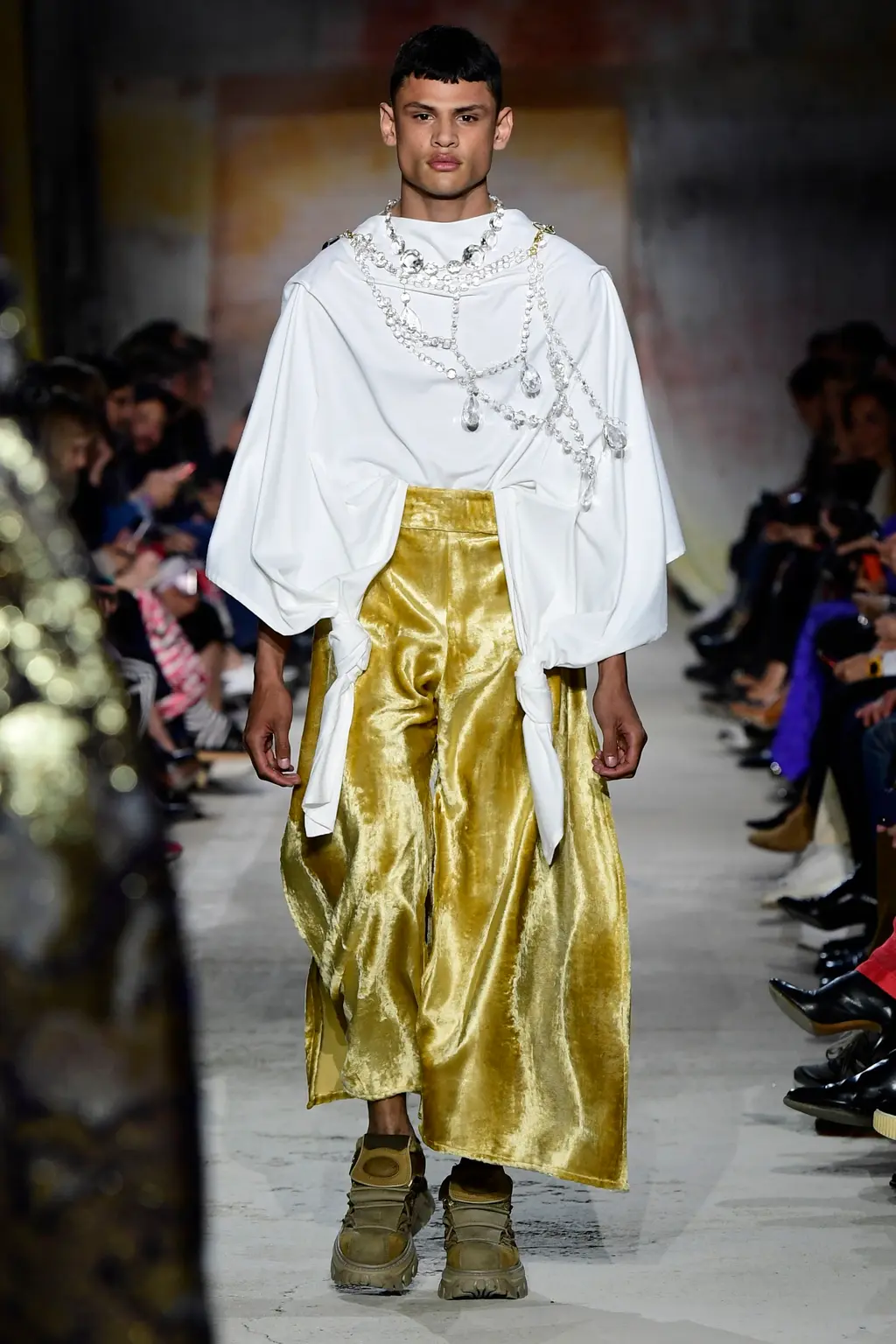
Courtesy of catwalking.com
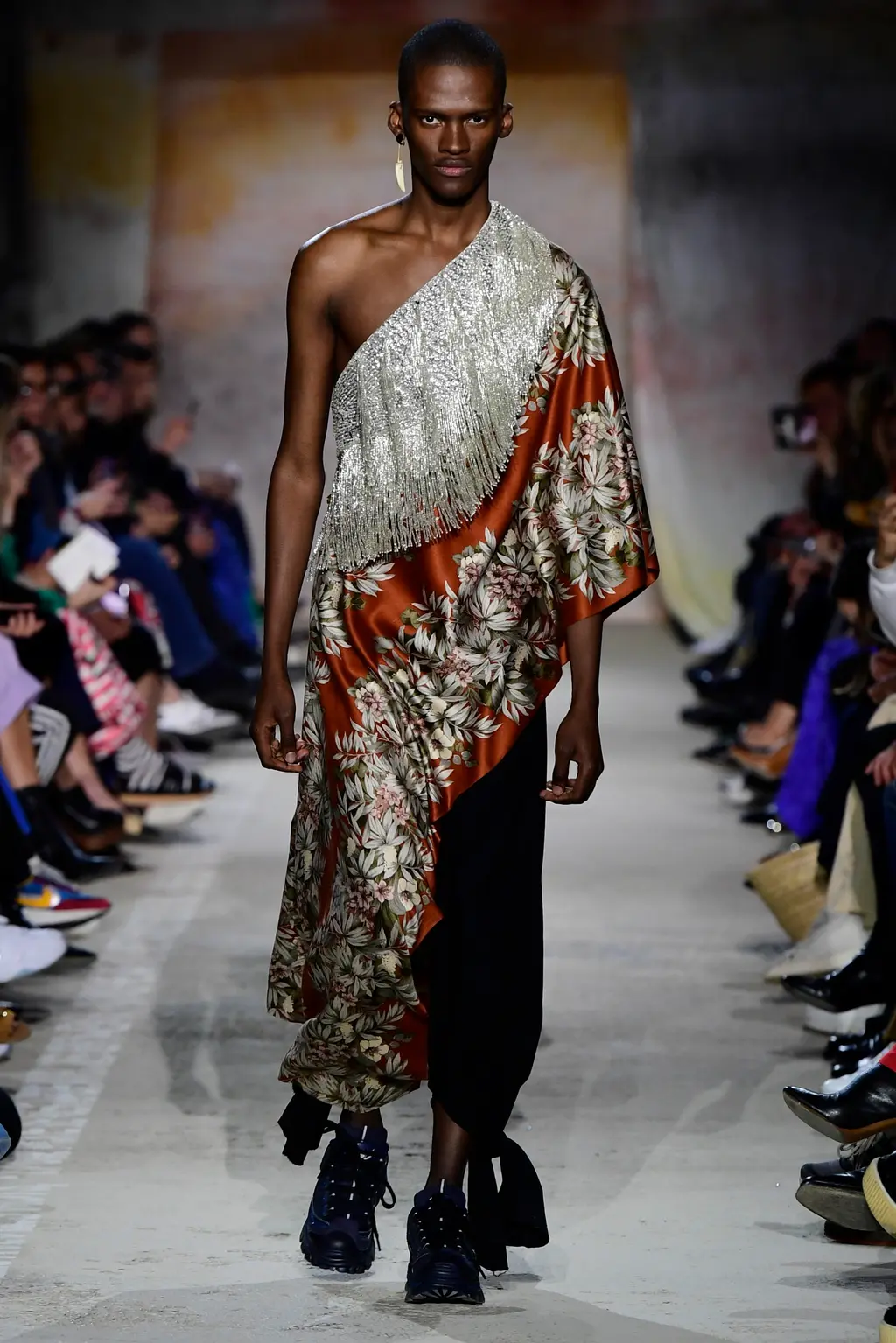
Courtesy of catwalking.com
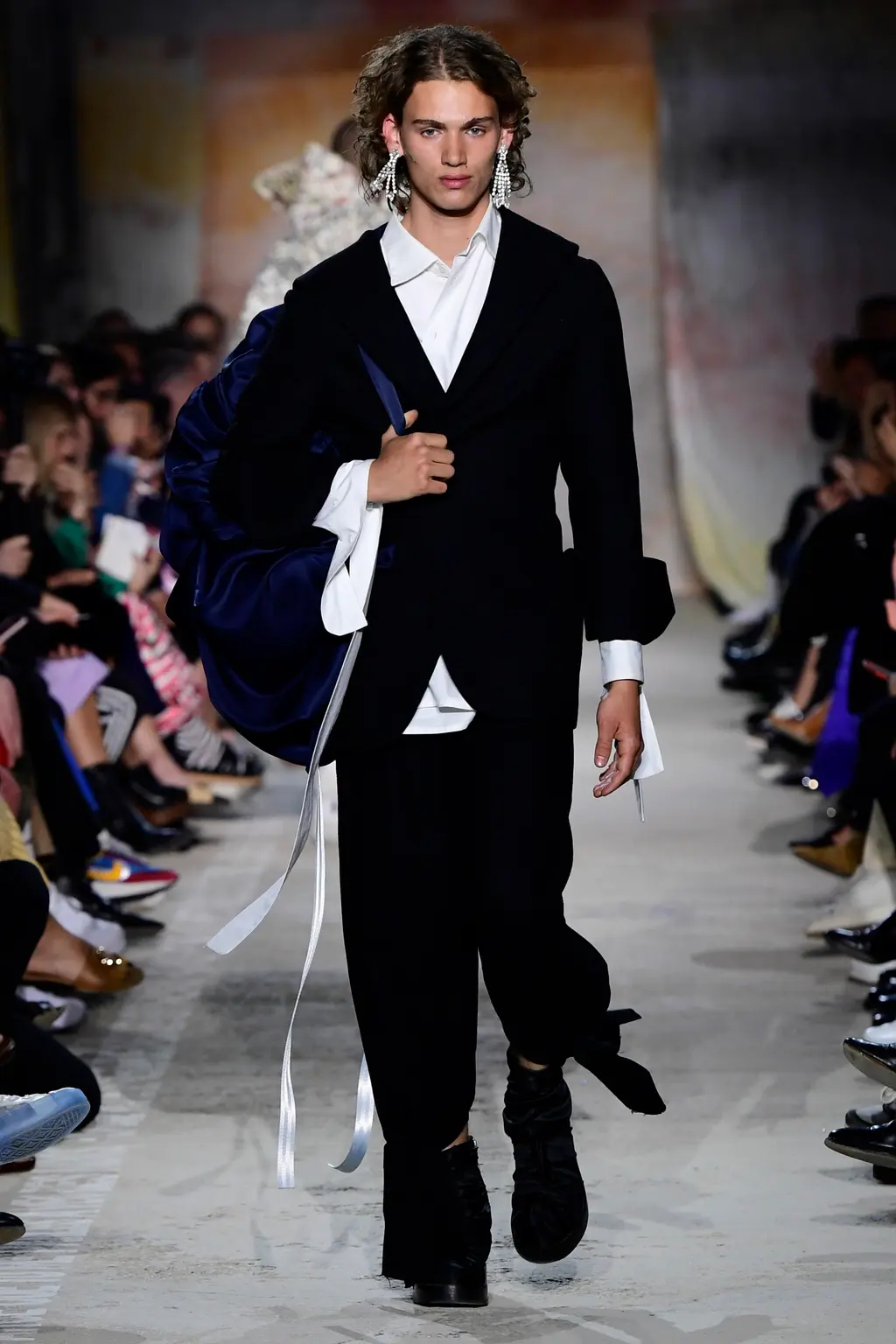
Courtesy of catwalking.com
Congratulations on your win! How did it feel to get that level of recognition?
It’s really great! I had no private life whatsoever when I was making this collection – like, I literally did nothing else – so I’m hugely appreciative of the coverage.
Have you always wanted to work in fashion?
I always liked it, but I was never very good at anything fashion-related. I couldn’t use a sewing machine and I wasn’t very good at drawing, so I studied architecture when I came to Vienna. I hated it! I really wanted to go to the University of Applied Arts because I knew they had a fashion course, so I stopped my [architecture] studies and just started drawing for like, two months straight. It all worked out, and now it’s getting better and bettter!
Were there any designers that influenced you, growing up?
John Galliano, definitely. I was always obsessed with that whole fantasy world he managed to create, especially at Dior.
On that note, can you tell us about the fairytale you created for your collection?
It’s the story of a little boy growing up in the woods, because he got lost there. He has to face every challenge and confront every situation on his own, without parents or anyone around him. But then he grows up and eventually comes back to his people, who tell him that he’s a long-lost prince. So the first part of his life is about survival in nature, but then he finds out he has this role of a prince which brings a completely different kind of struggle, which in a way is even harder for him.
In your eyes, how does the collection help to communicate this story?
Each of the looks show how he faces different challenges, and how he shines through. The beginning looks are about volume and protection, but then we start to see these more classical garments, the kind of clothes that are restrictive to him in some way.
The last look is this grey foam suit, which shows his whole personality. On the one hand it’s this classic trenchcoat pattern, but it’s made in this really loud fabric. It looks easy to wear, strong and protective, but really everything about this trenchcoat is kind of fake – you can’t use the buttons or anything, so [it’s restrictive] in the sense that there’s just one belt which closes the coat.
Are these stories and characters your starting point when designing?
I’ve always loved movies and stories, so I tend to make sense of a collection by building that narrative. The colection always comes first, then the story is about making sense of it. They’re just for me really, so it feels weird to be actually telling the stories now!
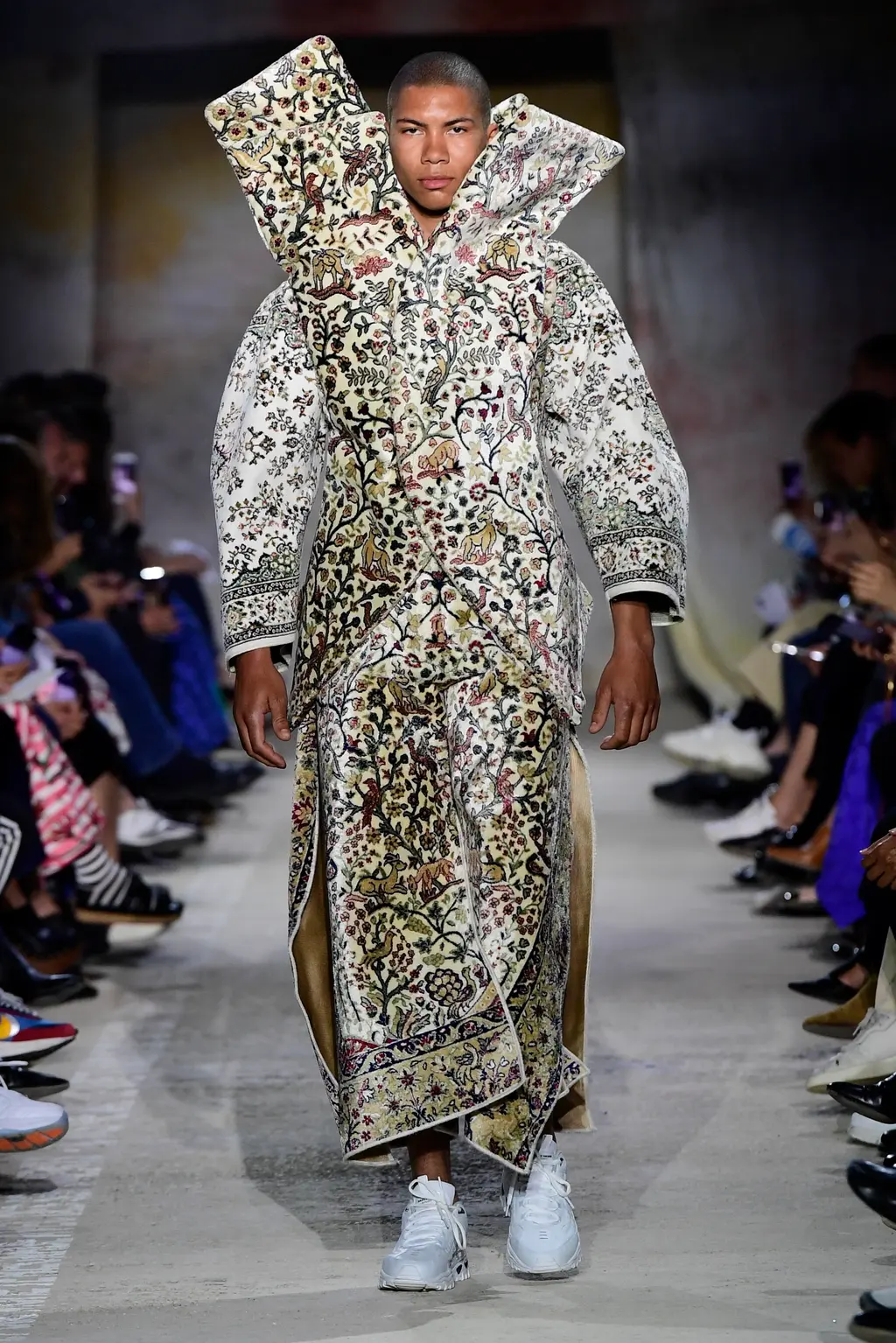
Courtesy of catwalking.com
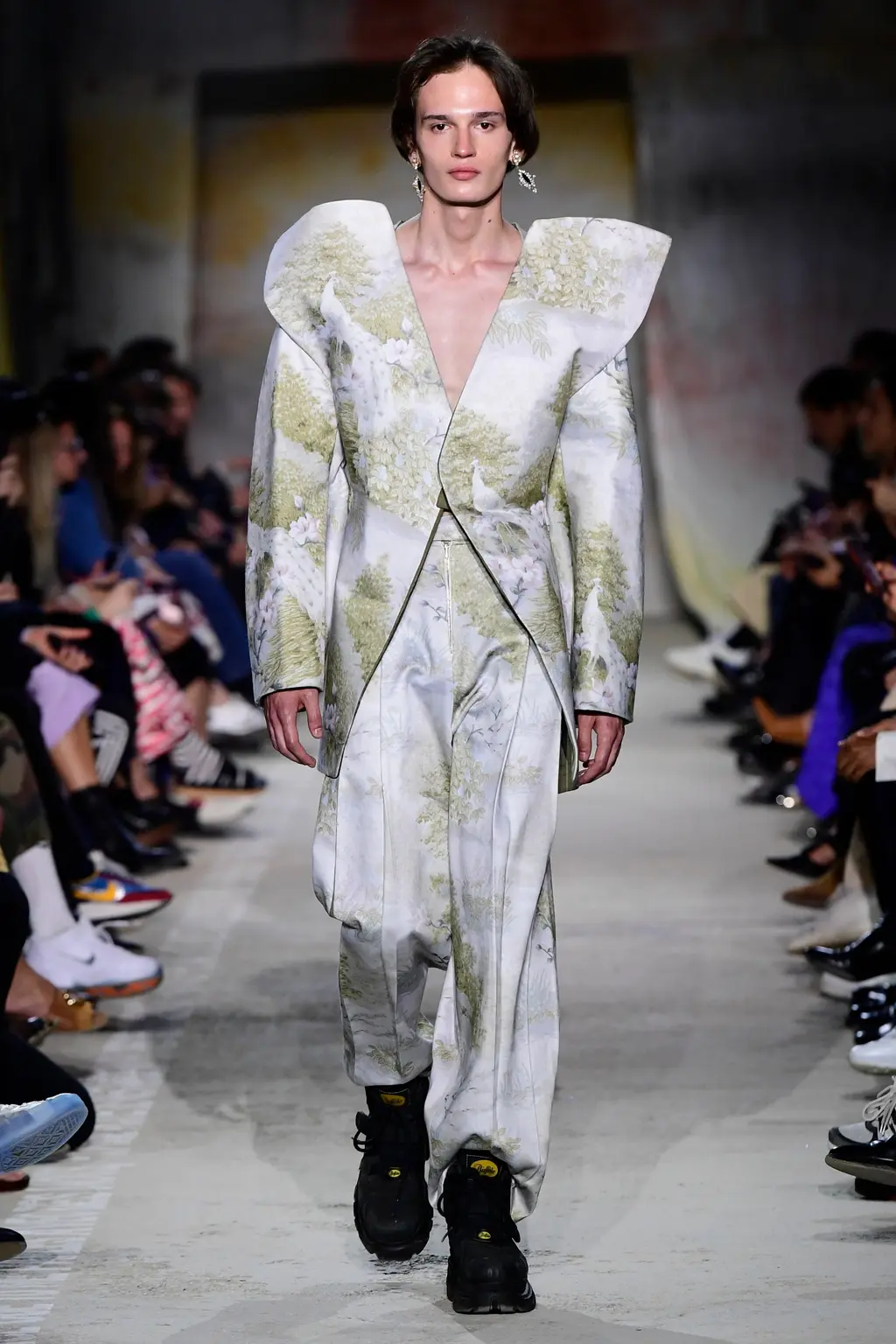
Courtesy of catwalking.com
Talk me through the fabrics for the collection. How did you decide which to use?
I’m obsessed with flea markets. I go all the time and my entire closet is basically full of whatever I’ve found there, so I wanted to bring that into my collection. I also wanted to use beautiful things which can be reused but which are usually just thrown away, so part of the fabric choice represents my approach to sustainability; it’s about reducing overproduction. Almost every textile in the collection is either from markets or it’s deadstock. The only exception is the grey suit I mentioned, which was actually made from car seat foam!
What do you think about conversations around sustainability in the fashion industry right now?
I really wanted to create sustainably-made clothes which don’t resemble any ‘sustainable’ fashion that’s already out there. I’ve been asked about how I could mass produce the clothes, but I don’t want to. I don’t want to become a huge, huge brand. I don’t want to produce 10,000 t‑shirts per year. I do want to become a successful brand, but I think you can do that and also work with second-hand materials.
One of the real challenges facing designers is knowing where your fabric comes from, so if you use deadstock or source fabrics locally, you know those facts. You can use those textiles to reproduce what you find at the flea market. This is how I make sure I’m working sustainably now, but I definitely want to experiment with other ways in the future because we need to keep the industry’s environmental footprint low.
In your experience, are fashion schools making efforts to educate students about sustainability?
Not really. I know that some universities like Central Saint Martins make it a priority, but otherwise I think it’s the students that are talking about it and starting those conversations – it’s already coming from them.
Lastly, we’ve seen so much talk around the evolution of menswear over the last decade or so. What made you decide to choose it over womenswear?
A big part of the decision honestly just came down to the fact that I could fit the clothes on myself; I could see how they felt and what they were like to wear. But I also think that what’s happening in the [menswear] industry right now is just more interesting. It’s exciting – I just really don’t think those old creative restrictions are there any more.
As a result of winning the prize, Christoph Rumpf will be showing his collection at Mercedes-Benz Fashion Week in Berlin. Images courtesy of catwalkpictures.com






